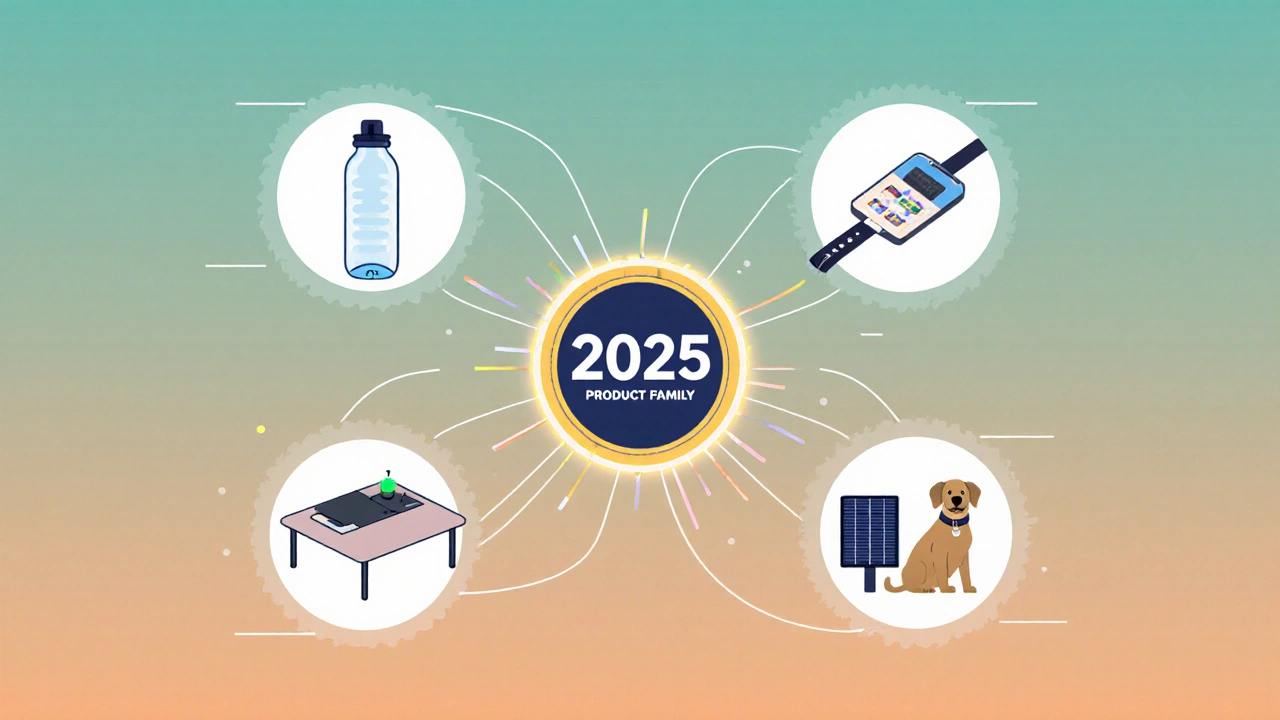Top Product Ideas to Invent for a Successful Manufacturing Startup

Product Viability Calculator
Assess Your Product Idea
Use this tool to evaluate your product concept based on the three key signals for a successful manufacturing startup: market demand, manufacturing feasibility, and competitive moat.
Viability Assessment
Key Strengths:
Areas to Improve:
Looking for a breakthrough product to invent can feel like hunting for a needle in a haystack, but the right approach narrows the field dramatically. Below you’ll find a practical roadmap that turns vague curiosity into concrete, market‑ready product concepts you can actually build and sell.
How to Spot a Viable Product Idea
Instead of chasing every shiny trend, focus on three core signals that separate a fleeting fad from a sustainable opportunity.
- Market demand is the engine that keeps a product alive. Look for persistent pain points, unmet needs, or growing consumer spend in a niche sector.
- Manufacturing feasibility matters more than you think. If a product requires exotic materials or unbelievably tight tolerances, early prototyping costs can explode.
- Competitive moat-whether it’s a patented process, a unique supply‑chain partnership, or a brand story that resonates-helps protect margins.
When an idea checks all three boxes, you’ve likely found a winner.
Reading the Market Signals
Data is the new crystal ball. Here are the most reliable sources you can tap without a PhD in analytics.
- Google Trends - Spot upward spikes in keyword searches over the past 12‑month window.
- Industry reports - Agencies like Euromonitor and Statista publish annual growth rates for product categories; a 7‑plus percent CAGR usually signals a healthy market.
- Social listening - Tools such as Brandwatch reveal recurring complaints or wish‑lists on platforms like Reddit and TikTok.
- Patent databases - A surge in filings around a technology hints at commercial traction.
Cross‑checking at least two of these sources reduces the risk of chasing a hype bubble that will fizzle by next year.
Product Types That Thrive in 2025
Below are five broad product families that align with current consumer habits, regulatory trends, and manufacturing capabilities.
| Category | Why It’s Hot | Key Manufacturing Tech |
|---|---|---|
| Eco‑friendly Home Goods | Consumers are paying up to 30% more for sustainable items. | Biodegradable polymers, low‑energy moulding. |
| Health‑monitoring Wearables | Growth in remote‑patient monitoring drives demand. | Flexible printed circuits, low‑profile batteries. |
| Modular Smart Furniture | Urban living space constraints spark interest in adaptable pieces. | CNC‑cut aluminium frames, snap‑fit plastics. |
| DIY Renewable Energy Kits | Home‑energy independence is a political priority in many regions. | Solar cell laminates, 3‑D printed casings. |
| Pet‑care Tech | Pet spending reached $115bn globally in 2024, and owners love gadgets that make care easier. | Miniature actuators, low‑cost sensors. |
Pick a family that matches your expertise or local supply chain strengths, then drill down to a specific product concept.

Turning an Idea into a Real Product: The Checklist
Use this step‑by‑step list to avoid the typical “idea‑only” trap.
- Validate the problem - Conduct at least five in‑depth interviews with potential users.
- Sketch the solution - Create low‑fidelity drawings or digital mock‑ups.
- Prototype - Build a functional MVP using 3‑D printing, laser‑cutting, or off‑the‑shelf components.
- Test with a pilot group - Gather quantitative data on usage frequency, satisfaction, and willingness to pay.
- Calculate cost of goods sold (COGS) - Include material, labor, tooling, and a 10‑15% margin buffer.
- Secure funding - Options range from government grants for sustainable manufacturing to angel investors focused on health tech.
- File intellectual property protection - A provisional patent can buy you 12 months of exclusive development.
- Design go‑to‑market strategy - Decide between Direct‑to‑Consumer (D2C) e‑commerce, B2B wholesale, or a hybrid approach.
- Scale manufacturing - Partner with a local contract manufacturer that can meet your volume targets while keeping lead times under 6 weeks.
Skipping any of these steps often leads to costly redesigns or, worse, a product that never reaches market.
Real‑World Shortcase Studies
Seeing how others succeeded (or failed) makes the abstract concrete.
- Eco‑Bottle Co. - Started with a simple reusable water bottle made from 100% plant‑based resin. After validating demand on Kickstarter (5,000 backers), they secured a £200k UK Innovate grant and partnered with a regional injection‑moulding firm. Today they ship 150k units annually.
- Pet‑Fit Tracker - A wearable collar that monitors activity and temperature. The founders built a prototype using off‑the‑shelf Bluetooth modules, filed a design patent, and raised £150k from a pet‑tech angel network. Their first run of 2,000 units sold out in three weeks on Amazon.
- Moduluxe Furniture - A line of flat‑pack, snap‑fit desks that transform into standing‑desk configurations. They leveraged CNC‑cut aluminium and recycled HDPE, winning a 2024 Sustainable Design award that opened doors to large retail chains.
Common threads: early user validation, low‑cost prototyping, and aligning the product with a clear sustainability or tech narrative.

Funding, IP, and Scaling - The Bottom Line
Even the best idea can stall without capital or protection.
For funding, start with bootstrapped prototypes to prove concept, then tap into regional schemes like the UK's Innovate UK Smart Grants or EU Horizon Europe calls for green manufacturing. Angel investors usually look for a clear path to profitability within 24 months.
When it comes to intellectual property, a provisional patent buys you a year to test market fit without spending on a full patent package. Meanwhile, trademarking the brand name prevents copycats from piggy‑backing on your marketing.
Scaling up means choosing a manufacturing partner that can grow with you. Look for facilities that offer both low‑volume pilot runs and the ability to switch to high‑volume production without massive re‑tooling.
By following the checklist, aligning with a thriving product family, and securing the right financial and legal safeguards, you can move from “what should I invent?” to “here’s my first sale.”
Frequently Asked Questions
How do I know if a market is big enough for a new product?
Start by estimating the total addressable market (TAM). A quick method is to multiply the number of potential users by an average willingness‑to‑pay figure sourced from surveys or competitor pricing. If TAM exceeds £5million in the UK or about $7million globally, you have a financially viable target.
What prototyping method is cheapest for a first‑run?
For most plastic‑based ideas, desktop FDM 3‑D printing costs under £0.20 per gram of filament. If metal is required, consider low‑volume CNC machining at a local maker‑space, which can keep the prototype under £500.
Do I need a patent before I start manufacturing?
Not necessarily, but filing a provisional patent before you reveal the design publicly provides a legal safety net while you test demand. Many startups begin with a provisional and convert it to a full patent once sales traction is proven.
Where can I find government grants for sustainable product development?
In the UK, check Innovate UK’s Climate‑Ready Grants, the Green Manufacturing Fund, and local Enterprise Zones that offer matched funding for eco‑focused projects.
Is D2C always better than wholesale for a new product?
D2C gives you higher margins and direct customer feedback, but it requires investment in branding, logistics, and digital ads. Wholesale reduces marketing burden but cuts profit per unit. Choose based on your cash flow runway and brand‑building goals.